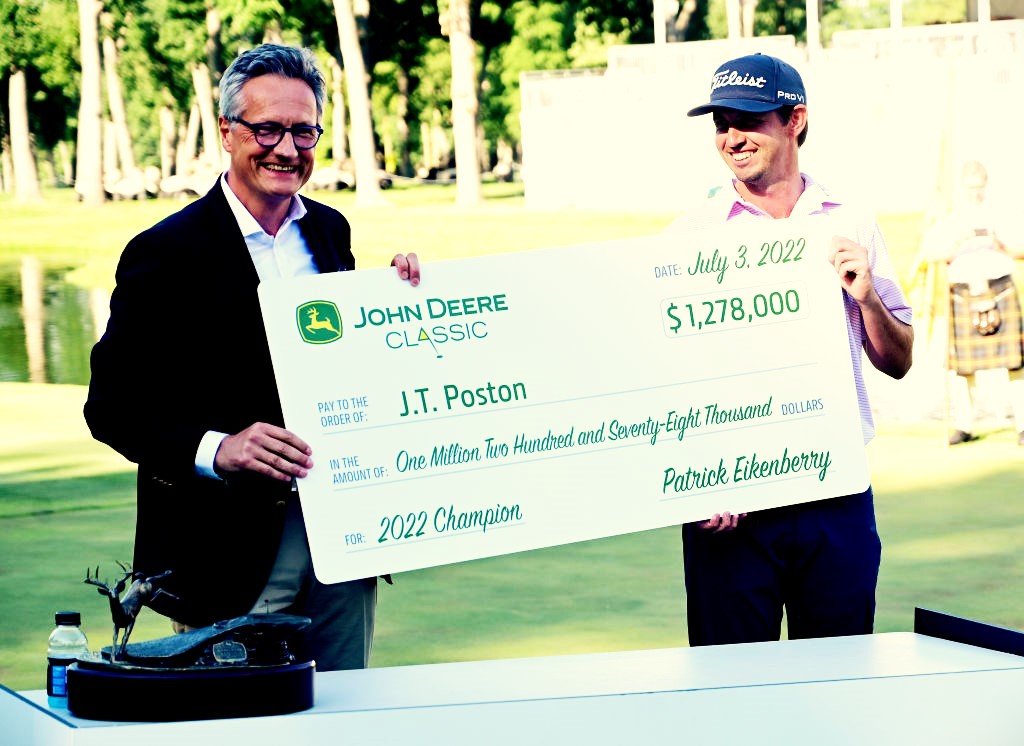Who Funds The Prize Money On The PGA Tour?
Who funds the prize money on the PGA Tour is not a simple question to answer as the financial model varies from tournament to tournament


Who funds the prize money on the PGA Tour?
Who funds the prize money on the PGA Tour has become a hot topic with the PGA Tour increasing its purses and prize money in a battle to ward off competition from LIV Golf.
The financial model is complicated and can vary according to the tournament. But essentially in some shape or form the purse for a tournament comes out of the income that the Tour and its tournaments generate.
The PGA Tour’s annual income in 2022 it was $1.9 billion, up from $1.59 billion from the previous year. The PGA Tour’s major sources of income are from media rights – reported as bringing in $763milion in 2023 – and tournament income, which was $425 million in 2023.
Wrapped up in this tournament income is the title sponsorship income of the tournaments, which itself forms the largest chunk of the tournament revenue, dwarfing other sources such a ticket sales, hospitality and pro-am entry fees. The tournament sponsors normally provide the principle source of the tournament’s purse or prize money.
This aspect is causing a problem for the PGA Tour after it has massively increased some purses to ward off the threat of defections to LIV Golf. This, in part, has involved the creation of Designated Events, known as Signature Events, with guaranteed purses of at least $20m.
Sponsors are therefore being asked to stump up more money in future. For example, the Wells Fargo Championship had a purse of $9 million in 2022, but now has a purse of $20m as a Signature Event. Tournament sponsors Wells Fargo have announced that it will not be renewing its contract with the PGA Tour after the 2024 event. It is said that Wells Fargo had asked that the championship be dropped from Signature Event status.
Typically a title sponsor pays a sum that is more than the purse of the event, A figure of one and half times the purse has been mentioned in the past. With the increasing purses, it is now suggested that negotiations centre on an annual sponsorship figure of at least $25m being sought for Signature Events.
Subscribe to the Golf Monthly newsletter to stay up to date with all the latest tour news, equipment news, reviews, head-to-heads and buyer’s guides from our team of experienced experts.
The PGA Tour has two basic models for how tournaments are organised. Either it runs them directly, as is the case, for example, with the Players Championship and the Sentry Tournament of Champions, through its for-profit arm Championship Management, or a local organiser pays a fee to the PGA Tour.
This local organiser funds tournament expenses and any net proceeds are distributed to charity. Thunderbirds Charities run the WM Phoenix Open, which attracts huge crowds, and raised $14.5 million from the tournament this year; the year before, it was $10.5m.
It has been reported, in an effort to fund the increased purses, that the PGA Tour wants to increase the fee it charges local organisers as well as taking a cut of the tournament revenue.
The PGA Tour has other sources of income beyond running tournaments and selling media rights. Prime among this is the Tournament Players Clubs, a chain of public and private courses either owned or licenced by the Tour. Other significant incomes for the PGA Tour are corporate licensing and investment income on its reserves.
Contributing Writer Roderick is the author of the critically acclaimed comic golf novel, Summer At Tangents. Golf courses and travel are Roderick’s particular interests. He writes travel articles and general features for the magazine, travel supplement and website. He also compiles the magazine's crossword. He is a member of Trevose Golf & Country Club and has played golf in around two dozen countries. Cricket is his other main sporting love. He is also the author of five non-fiction books, four of which are still in print: The Novel Life of PG Wodehouse; The Don: Beyond Boundaries; Wally Hammond: Gentleman & Player and England’s Greatest Post-War All Rounder.
